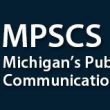Maryland completes first phase of P25 network
Maryland recently had the first call made on its new 700 MHz P25 network known as the Maryland First Responders Interoperable Radio System Team (Maryland FiRST) that is being built by Motorola Solutions.
Built under a $340 million contract with the Maryland Department of Information Technology, the infrastructure portion of the P25 Phase 2 TDMA system’s 23-site first phase is basically complete, according to Debora Courtright, Motorola Solutions’ vice president of North America government markets. Motorola has started work on the second phase of the project, which will be built in four stages and is expected to be complete in 2016, she said.
“Obviously, the first targets were around the most critical infrastructure in the highly populated areas in the state,” Courtright said, noting that the first phase includes coverage of the I-95 corridor.
Initial users on the network will be the state police, Kent County and the Maryland Transportation Authority — the latter two of which will satisfy their VHF narrowbanding requirements by vacating that spectrum and moving to the 700 MHz system.
“This infrastructure is being built out for state users,” Courtright said. “But there is the option for the locals to join the network, if they so choose I think that’s ideally what the state of Maryland would like to see happen. … The idea is, at some point, we would achieve interoperability with the locals, whether they are part of the Maryland FiRST network or if they are standalone.”
Maryland Gov. Martin O’Malley, who made the ceremonial first call on the system from the Inner Harbor in Baltimore, echoed this sentiment and stressed the importance of the 700 MHz LMR system in the state’s interoperability plans.
“All of the radios that our police officers and firefighters carry should enable them to communicate with other jurisdictions or departments, not only during large-scale emergencies, but also for basic, daily operations,” O’Malley said in a prepared statement. “By building Maryland FiRST, we are making great progress toward this critical goal of interoperability for our public-safety agencies. Our first responders deserve modern communications equipment to perform their jobs in the safest and most effective way possible.”
Some users are planning to use APX subscriber units to take advantage of the radios’ multiband characteristics, Courtright said.
“That will allow them to be able to use their existing VHF infrastructure as they migrate onto the new network, as well as the radios being backward compatible with the current infrastructure, which will allow interoperability,” she said.
















